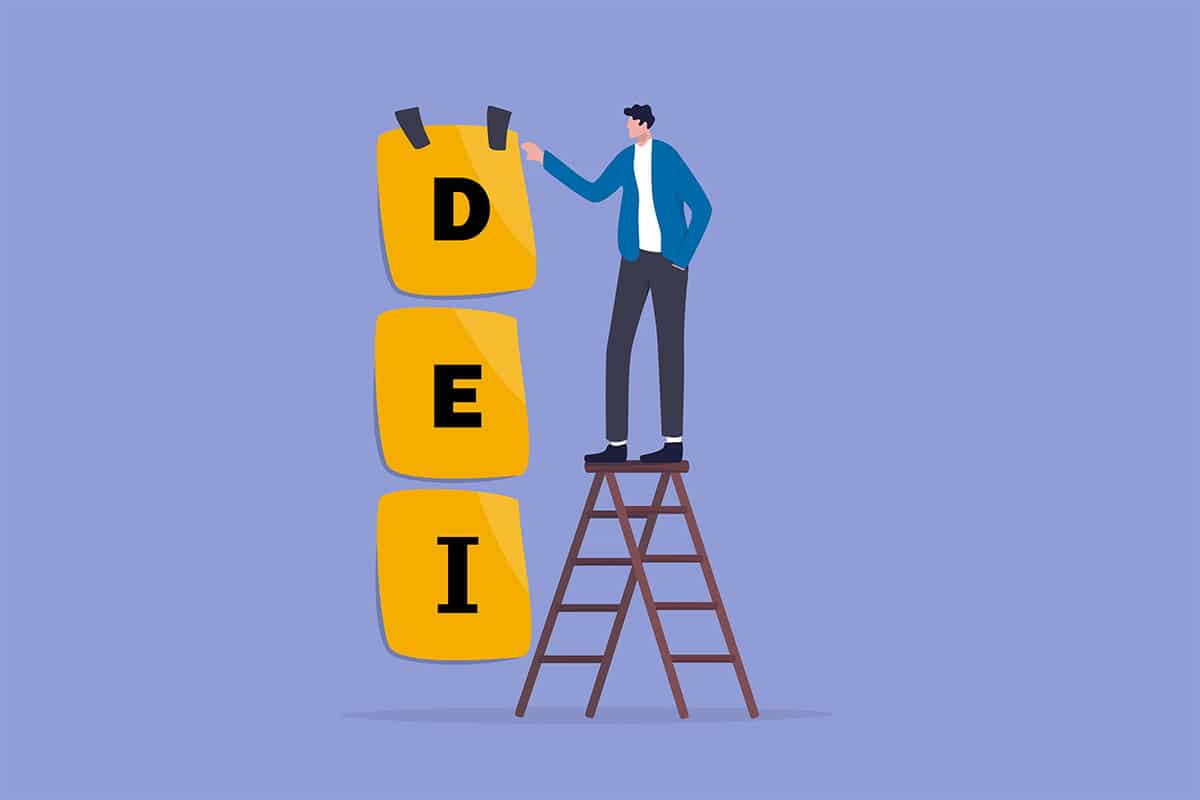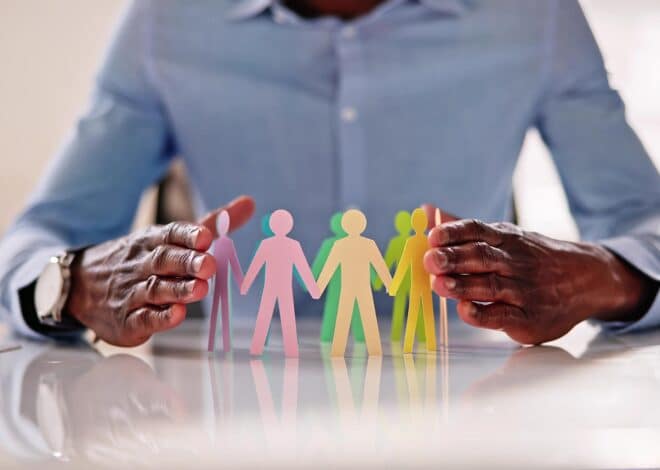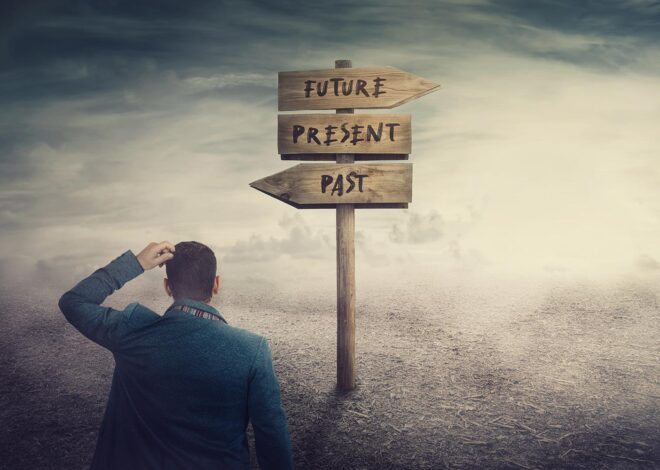Moving Beyond Performance: Making DEI Actionable
If you want to make your organization a healthy space for all and overcome biases and prejudices, you have to do the Diversity, Equity, and Inclusion work. It’s that simple.

Be sure your DEI efforts produce real results — not just performative ones.
At The Nava Center, our mission is to increase equity. As a licensed clinical psychologist focused on treating trauma, I know that providing accessible, affordable trauma treatment is one way to reach this goal. But what are some of the underlying issues that cause trauma?
There are familial issues and abuses of all kinds — these might be what you think of first when you hear the word “trauma,” and of course, that trauma is detrimental to survivors as well as their loved ones. But what about the widespread trauma perpetrated daily through systemic racism? Make no mistake: Racism is trauma, and it is impacting millions of people, multiple times, each and every day.
For trauma experienced by one person or a small group, there are innumerable possibilities for interventions. But how do we treat the cultural trauma that has existed in the United States for hundreds of years — a trauma that isn’t even acknowledged by everyone?
This Question is Not New
Racism as trauma is not a new concept, but it is only recently becoming more mainstream.[1]
In terms of general racism, when you live in a society that treats you as Other and less-than, you are separated from the mainstream immediately. You may start to believe that you, others who look like you, or others who share your culture, are inherently bad. Or you might feel angry about being treated differently and lash out at your community, friends, family, and coworkers. When you express emotion about how you are being treated unfairly, others may tell you that “it’s all in your head,” “there is no conspiracy,” and “everyone is equal now” (I’m not editorializing here — these are real quotes). In response to this, you may start to disengage from society all together or alternately expend extra energy to “prove people wrong” about you.
On the other hand, an unfortunate part of this narrative is that many people perpetuating trauma through racism don’t even know they are doing it: When the world is made to cater to someone who looks like you or is part of your culture, you don’t have to notice that others are treated differently because you think it doesn’t directly impact you. And once you do notice, you might question whether you’d even want to change the status quo.
However, this framework supposes that racism is a zero-sum game: It puts those with privileged identities on an opposing side from those without privilege, wherein only one “team” can win.
This is, thankfully, not the case. In fact, the more diversity, equity, and inclusion (DEI) we support and promote, the better we are as nonprofit organizations and communities. We have this knowledge now, so it should be easy to change, right?
Yet, a more inclusive and equitable space is not as easy to create as it might seem. Studies have shown that even people who do not consciously subscribe to racist beliefs often subconsciously enact racism.[2] That’s because racism — and, to many degrees, sexism, transphobia, and other biases — do not just live in our minds but also occupy our bodies in automatic responses that stem from either socialization or intergenerational trauma passed down somatically.
This means we not only have to relearn with our brains but also reteach our bodies how to respond to others. There is a body of work around this called Somatic Abolitionism, a term coined by Resmaa Menakem, to encompass “an individual and communal effort to free our bodies — and our country — from their long enslavement to white body supremacy and racialized trauma.”
To me, the goals of somatic abolitionism are integral to equity work. However, as part of the nonprofit sector, I worry that our actionable outcomes are lost as a result of institutionalization, especially in terms of the ever-present DEI trainings. That is, there seems to be a disconnect between what nonprofits say they want and what they actually do.
The Problem with DEI Trainings
How many of you have been to a DEI or unconscious bias training, or perhaps participated in a task force dedicated to change?
While working in academia and for other nonprofit organizations, I sat through over a dozen training sessions, workshops, and “fireside chats” about changing culture. And yet, after those one-off meetings, trainings, and workshops, nothing ever changed (perhaps unsurprisingly): My colleagues and clients continued to experience daily harm. As a white person, I knew that I needed to take a more active role in making change, but I also knew that I needed to be working in a system that supported change-making, not just change-talking. When the system is only committed to band-aids or performative actions, trauma continues to occur.
Attending trainings that have no goal setting (along with follow up meetings) is performative. There. I said it.
Here’s another one: Having a speaker talk to your organization about how to decrease microaggressions or appropriate language usage is not enough.
DEI work takes constant and consistent practice. Is it exhausting? Of course. Does that make it unnecessary? Absolutely not.
After all, folks holding marginalized identities do this work all day, every day, often because they have to — whether they want to or not.
Let’s Try Doing it Differently
If you want to make your organization a healthy space for all, you have to do the work. It’s that simple.
Having said that, please keep in mind that there is no “right” or “best” way to do the work. Instead, the following present some guiding principles. These might help you figure out how to do DEI work in the most effective way possible for your organization.
Get the research.
Don’t just read the trendy antiracist book of the moment. Actually read the research on how to create equity within your institution.[3] For additional resources, check out some of the links at the bottom of this article — and feel free to comment your favorites!
Hire an outside consultant.
Having someone outside of your agency do the necessary assessment of needs and goals is crucial (if you can afford it). Typically, employees feel more comfortable talking to a stranger about their experiences than to someone they have to see every day who may judge or misuse what they learn.
In general, a DEI assessment should look at all organizational aspects to help everyone to better understand dimensions of power and the current status of equity. And if you don’t have the funds to hire an outside consultant, it is even more important to be transparent about the process with all involved.
Set goals.
Don’t assume that everyone in the organization has the same goals regarding equity. In fact, you may discover that some people’s goals do not match those of the agency — and vice versa. Determining what you want your organization to look and feel like helps design the path to get there. Using conversations, focus groups, and surveys, you must determine what your staff needs so they know that your organization is a healthy place to work. This is by no means a linear journey, but clarified goals are vital to see where you need to go.
Take the following situation, for instance: An ED’s goal is to hire more people of color; a manager’s goal is to get wheelchair access to all offices, and one employee’s goal is to have everyone paid equally and transparently. Equity, here, might be a common goal, but it manifests in three completely different ways.
Understanding the Venn diagram of shared-versus-not goals can be an arduous process (another reason why an outside consultant can be helpful). However, collaborative goal setting can increase equity within an organization, and having people assigned to these goals increases the likelihood that movement is made.
At the end of the day, your organizational structure guides how you move forward with goal setting. For instance, you may decide on several all-staff meetings or delegate preliminary work to managers before everyone comes together.
But the key is collaboration — equity relies on non-hierarchical planning, even if the leadership team eventually is responsible for metabolizing information and identifying what can or cannot be done. At some point, all staff need to take part in these discussions, and the organization must set goals at every level.
Follow up.
“Follow up” is a nice way of saying that everyone is holding each other accountable for this work being done. I am not just suggesting that managers follow up with their staff after a meeting. Instead, I am recommending that each person routinely checks in with one another about their personal and professional engagement in DEI. The organization must also hold regular meetings where everyone is held accountable to do this work.
This is because goals usually require a lot of different things happen in order to reach them. It is not only important to set the goals but come up with actionable steps toward change, assigning people work to put those steps into action.
Understand this process as ongoing.
DEI is not a one-time (or even quarterly) training. Instead, DEI needs to be built into the fabric of the organization.
At The Nava Center, we believe that ongoing training, consultation, engagement, and coaching is how sustainable change is made. Everyone — yes, all staff — needs to be trained in DEI basics, such as privilege, oppression, and microaggressions, to ensure everyone is on the same page (especially if you are a client-facing organization).
But training is just the beginning. Regular meetings (such as affinity or supervision groups) should be held where issues can be brought up and discussed, and there should be designated action steps and people in charge of these steps after each meeting.
A note here about DEI workgroups: These are great if they have the power to make change. When I worked in academia, I was on a DEI task force where we wrote a 50-page document detailing what needed to be done to create the kind of environment clients and staff wanted. But by the time I left my job at that organization, one small change had been made; the rest of the suggestions were “being discussed” with no timeframe for follow-up.
Think of DEI work as both a marathon AND a sprint. Sustainable change takes time, but there are changes that need to be made ASAP. Book clubs and affinity groups are great supports for staff, but they are never going to change an organizational culture on their own.
Get comfortable with discomfort.
Transparency is a key feature of DEI work. We must be honest with ourselves if we want people to be honest with us. Equity work can be beautiful and transformative, but there are usually some growing pains as well. This has to do both with our socialization and the nature of the work itself.
Unfortunately, there are no such things as truly “safe spaces,” especially considering there are individuals who haven’t done their own internal work around biases and beliefs. Ultimately, being transparent with yourself and with others whom you can trust, as well as asking for help when needed, will make things easier in the long run. Again, outside consultants can often act as non-judgmental but honest sounding boards for this work.
The political should be personal as well.
To be clear, DEI is not just organizational work. This is personal work. This is family work. This is human work. This means reading books and listening to podcasts and then talking about them with friends and family. It means finding a space, such as an affinity group, in which you can be vulnerable and understand yourself better to work through biases and prejudices.
Many of us may believe we hold no biases (a legacy of colorblindness) because we are part of multicultural friend or family groups. However, we all hold what came before us, passing on what we do not metabolize and rid ourselves of. The more we learn about our own and others’ identities, the better we can unlearn what has come before us and continues today: The societally inherent racism and prejudice that causes trauma to so many.
My hope is that this motivates you to do more with and for yourselves and your nonprofits. This work is hard AND we all need to keep doing it. Together, we can create an equitable world which benefits us all.
Additional Resources
Books
- Feminism Is for Everybody: Passionate Politics — Primer to feminism
- Me and White Supremacy: Combat Racism, Change the World, and Become a Good Ancestor — Examines white privilege and allyship
- My Grandmother’s Hands: Racialized Trauma and the Pathway to Mending Our Hearts and Bodies — Cultural Somatics through civil unrest, organizational change, and community building
- The Racial Healing Handbook: Practical Activities to Help You Challenge Privilege, Confront Systemic Racism, and Engage in Collective Healing — Guide to racial healing
- So You Want to Talk about Race — How racism infects every aspect of American life
- Social Change Now: A Guide for Reflection and Connection — A roadmap for those ready to deepen their commitment to social justice
- DEI Deconstructed: Your No-Nonsense Guide to Doing the Work and Doing It Right a book by Lily Zheng (bookshop.org) — Comprehensive and foundational text for critically analyzing and applying actionable DEI techniques and strategies.
- White Women: Everything You Already Know about Your Own Racism and How to Do Better a book by Regina Jackson and Saira Rao (bookshop.org) — A guidebook aimed at white women who want to stop being nice and start dismantling white supremacy.
Podcasts
- About Race with Reni Eddo-Lodge — Looks at the intersections of recent history & politics
- Code Switch — Fearless conversations about race with empathy & humor
- Dear Good White People With Dra Rocio Rosales Meza — On decolonizing, spirituality, and wellness
- FEMINASIANS — Current events and lived experiences from an Asian American intersectional feminist, anti-racist, anti-imperialist perspective
- From Woke to Work: The Anti-Racist Journey — Going from self-proclaimed ally to anti-racist
- Seeing White — All about whiteness
- White Picket Fence — Explores how motherhood has been used for political gain
Miscellany
- Anti-Racism Daily: The #1 Educational Newsletter to Unlearn Racism and Oppression
- Cross Cultural Solidarity
- Talking About Race | National Museum of African American History and Culture
- WHITE SUPREMACY CULTURE
- #DoTheWork Course
Sources
[1] For example, I’ve found Joy DeGruy Leary’s Post-Traumatic Slave Syndrome to be helpful in understanding the impact of anti-Black racism in particular.
[2]For an example of conditioned racial bias, check out this Mother Jones article.
[3] DEI Deconstructed by Lily Zheng is a favorite resource of mine for better understanding DEI needs and processes.
About the Author
Dr. Jessica Shore is a clinical psychologist with over ten years specializing in trauma and the founder of The Nava Center. She earned her Bachelor of Arts in Communication Studies from the University of Maryland and then went on to earn a Master of Arts in Professional Psychology and a Doctorate in Clinical Psychology from the Massachusetts School of Professional Psychology (now William James College). Dr. Shore completed a Certificate in Traumatic Studies at The Trauma Center at JRI where she completed her internship and post-doctoral work. She is committed to antiracism, both professionally and personally. Outside of her professional interests, Dr. Shore loves a good mystery novel, when her dog wants to snuggle, and watching television shows only popular in the 80s and 90s.
Articles on Blue Avocado do not provide legal representation or legal advice and should not be used as a substitute for advice or legal counsel. Blue Avocado provides space for the nonprofit sector to express new ideas. Views represented in Blue Avocado do not necessarily express the opinion of the publication or its publisher.











